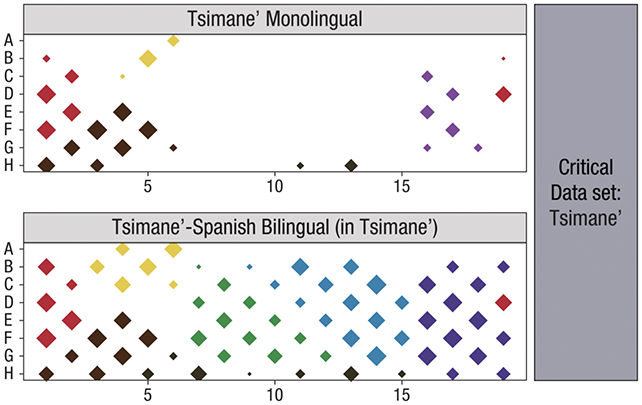A new study on language learning has revealed the emergence of specific words to distinguish 'blue' from 'green' was a consequence of learning a second language.
There's a lot of variation in the number of basic color terms described by different languages. More isolated populations tend to have fewer words to separate out colors in the spectrum, and those they do have tend to differentiate 'warmer' colors (like red and yellow) more than 'cooler' colors (like blue and green).
In the case of an indigenous society who live in a remote part of lowland Bolivia known as the Tsimane' people, just a small handful of color terms are used frequently, describing black, white, and red. There are also a few words that cover variations of yellow, and two words – "shandyes" and "yushñus" – that are used interchangeably to cover all shades of blue and green.

However, in experiments with 30 Tsimane' individuals who also spoke Bolivian-Spanish, researchers found that they used "yushñus" exclusively to describe the color blue, and "shandyes" exclusively to describe green – matching the clear categorization of Spanish.
"Learning a second language enables you to understand these concepts that you didn't have in your first language," hypothesizes Edward Gibson, a cognitive scientist at the Massachusetts Institute of Technology (MIT).
"What's also interesting is they used their own Tsimane' terms to start dividing up the color space more like Spanish does."
This perspective on language and thought, however, is fiercely debated. Other linguists argue that language can constrain the experience of color only to a limited degree, and that the orderly emergence of color terms is mostly universal. After all, just because you don't have a term for a color doesn't mean you can't 'see' its differences when compared to another color.
The 30 bilingual Tsimane' people, together with 71 individuals from the same Amazonian society who were monolingual, were asked to sort 84 chips of different colors and to say how they would label and name them. The bilingual participants were asked to repeat the same task in both Tsimane' and Bolivian-Spanish.
As well as separating out the blue and green names, the people who spoke two languages were more precise about naming colors in Tsimane'. It's an example of how languages can have an impact on each other, say the researchers and how concepts like color can be restructured based on language.
"The bilingual speakers learn a different way to divide up the color space, which is pretty useful if you're dealing with the industrialized world," says Gibson.
"It's useful to be able to label colors that way, and somehow they import some of that into the Tsimane' meaning space."
The team behind the study says that the bilingualists may begin to influence the monolingualists – although it's more likely that more monolingualists will start to learn Bolivian-Spanish as well.
That is due in part to the Tsimane' interacting more with the outside world, and with a money economy. Next, the researchers are keen to see if the same patterns repeat in other isolated communities.
"It's a great example of one of the main benefits of learning a second language, which is that you open a different worldview and different concepts that then you can import to your native language," says Saima Malik-Moraleda, who studies bilingual brains as a graduate student at at Harvard University.
The research has been published in Psychological Science.
